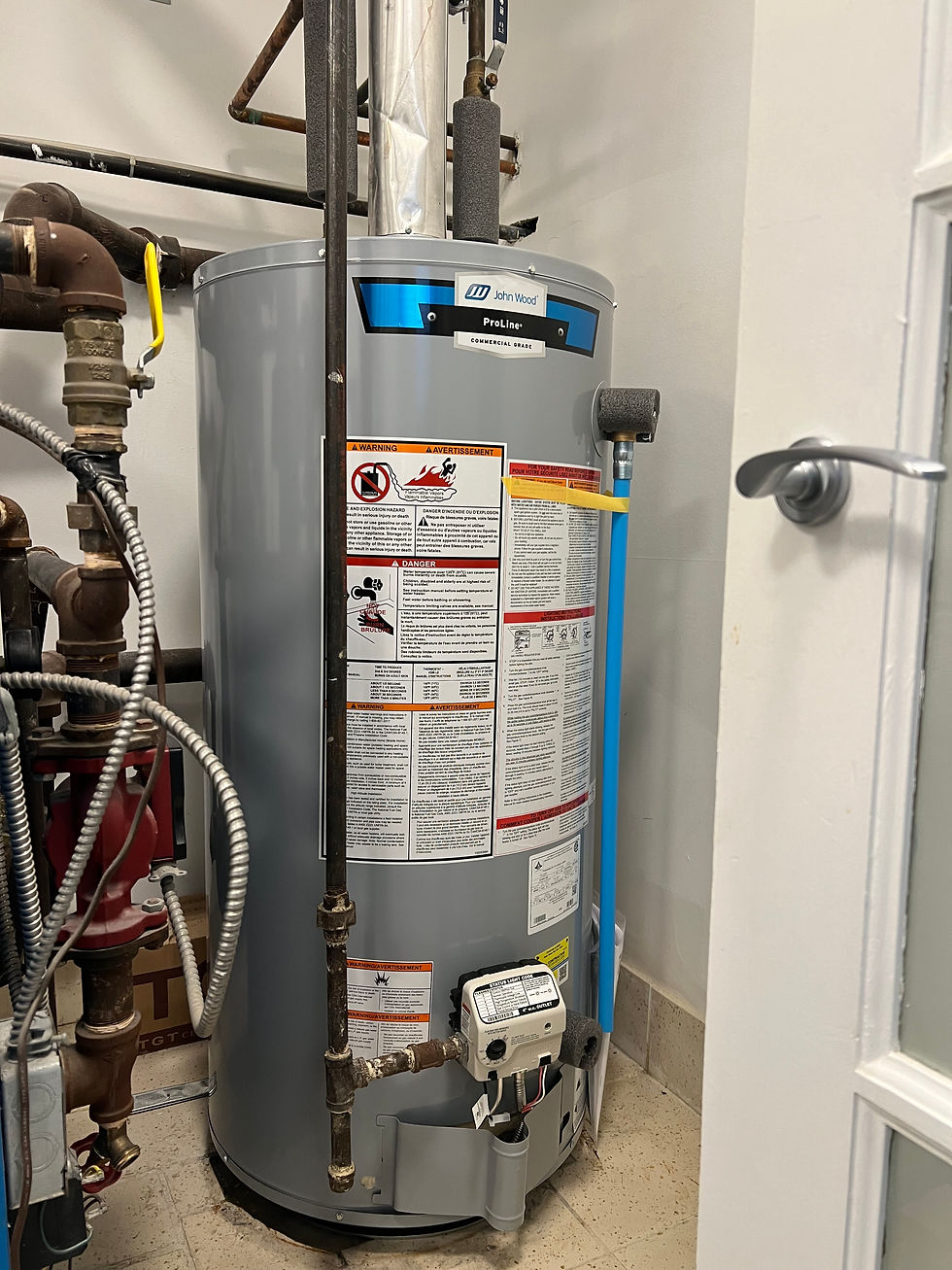Why It’s Important to Have an HRV/ERV in a House
- thermexheat
- Oct 12
- 2 min read
Modern homes are built tightly to save energy — but that tightness can trap pollutants, moisture, and gases like radon indoors. An HRV or ERV provides fresh air ventilation while recovering energy from exhaust air, helping maintain both a healthy and efficient home environment.

1. Improves Indoor Air Quality
HRVs and ERVs continuously remove stale indoor air and replace it with filtered outdoor air.
This exchange helps lower levels of indoor pollutants such as dust, pet dander, carbon dioxide, and volatile organic compounds (VOCs).
As a result, your indoor environment feels fresher, smells cleaner, and supports better respiratory health.
2. Reduces Radon Levels
Radon is a colorless, odorless radioactive gas that can seep into homes from the soil through cracks and openings in the foundation. Long-term exposure increases the risk of lung cancer.
HRVs and ERVs help reduce radon by:
Diluting indoor air: Constant ventilation decreases radon concentration by replacing radon-laden air with outdoor air.
Reducing negative pressure: A well-balanced system prevents the home from pulling in radon from the soil.
Promoting even air pressure: This minimizes the “vacuum effect” that draws radon into basements or lower floors.
While not a full replacement for a dedicated radon mitigation system, an HRV or ERV complements it and can lower radon levels significantly — often by 20–50% or more in moderately affected homes.

3. Enhances Energy Efficiency
HRVs and ERVs recover heat (and in ERVs, moisture) from outgoing air to precondition incoming air.
This means your heating and cooling system doesn’t have to work as hard, reducing energy bills while keeping fresh air flowing.
Compared to opening windows for ventilation, HRVs/ERVs provide year-round air
exchange with minimal energy loss.
4. Balances Temperature and Humidity
In winter, these systems recover warmth from exhaust air, helping to keep the home comfortable.
ERVs also transfer moisture, keeping indoor air from becoming too dry in winter or too humid in summer.
Stable humidity levels reduce the risk of mold, condensation, and structural damage.

5. Protects the Home’s Structure
By controlling indoor humidity and air pressure, HRVs and ERVs prevent moisture buildup, condensation on windows, and mold growth inside walls and insulation.
This extends the life of your home’s structure and finishes.

6. Supports Airtight, Energy-Efficient Homes
Modern construction techniques seal homes tightly to prevent heat loss — but that also traps pollutants and radon.
HRVs and ERVs provide controlled ventilation, ensuring homes remain both efficient and healthy.
Looking to improve your home’s air quality and efficiency?
Thermex Heating and Air Conditioning Inc. offers free consultations and quotes for HRV/ERV installations.
Call us today at (416) 500-1047 to learn more!



